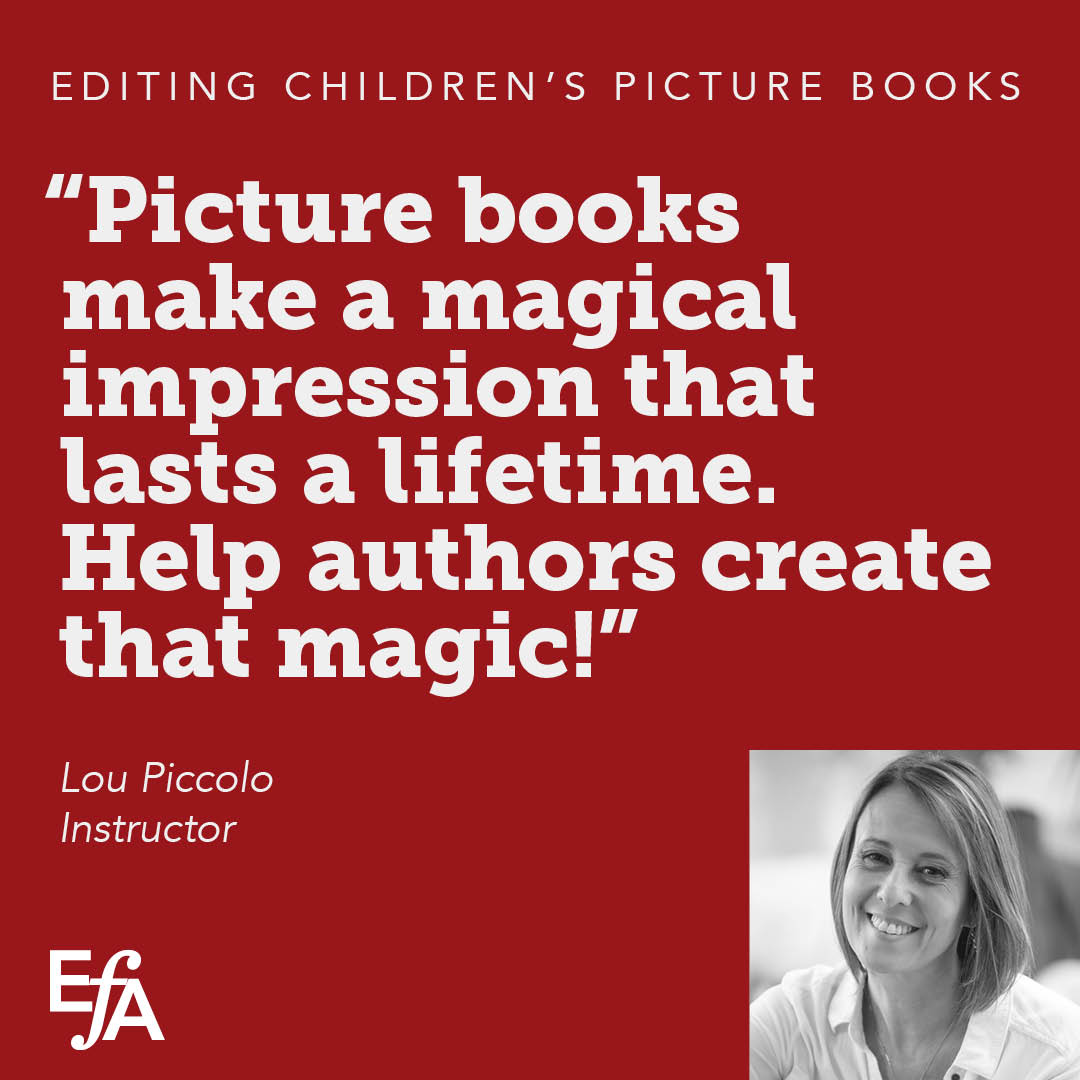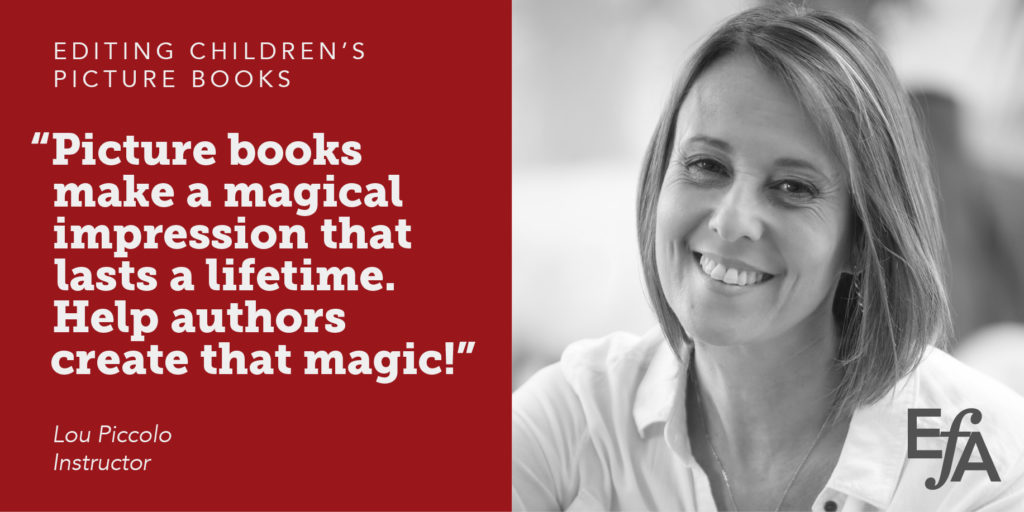Description
Our courses are asynchronous, meaning you never need to be at your computer at any specific hour. More information about how these classes are conducted is available here.
After placing your order, your course will be added to your personal course library on our education site. That site has different login information from the main EFA site. Please check your email for information on how to access the course.
If this session is full or the dates don’t work for you, join the waitlist to be informed of last-minute openings and future sessions.
Picture books are a child’s first impression of reading, but they are essentially written for an audience who cannot read. Guidelines for picture book manuscripts help authors and editors create books that are engaging to both the children who listen to them and the adults who read them out loud. Editing picture books requires specialized knowledge and techniques.
If you’d like to begin editing narrative fiction children’s picture books, this course is a comprehensive guide, ensuring you can help your client to produce a properly structured manuscript with a forward-moving plot, essential obstacles, and memorable characters.
- Week 1: What is a picture book? We’ll go over the format, how words and illustrations work together, and the words and rhythms of a picture book.
- Week 2: We’ll cover developmental editing, including plot, motivation, conflict, characters, and setting.
- Week 3: We’ll look at picture book storytelling techniques and line editing, including vocabulary, point of view, dialogue, tone, and showing and telling.
- Week 4: To rhyme or not to rhyme? We’ll discuss when a picture book can rhyme and when it shouldn’t, and the difference between rhyme and meter.
- Week 5: We’ll go over how to scan a rhyming picture book manuscript, the art of scansion, and “rhyme crimes.”
- Week 6: We’ll wrap up with troubleshooting and putting it all together: revising plot line, pace, and visual elements, as well as layout and page turns.
There are six assignments in this course, one for each week: three are self-marking assignments, two will be marked by your instructor, and the third is a collaborative exercise with your instructor and the other students during a Zoom call. You will receive in-depth and detailed video feedback for the assignments your instructor marks, and there will be a replay for the Zoom assignment if you cannot attend the call. You can expect to spend 1–3 hours per week on reading the lessons and doing your assignments.
At the end of this class, you will be able to identify the characteristics of a picture book, understand how these characteristics work together, and learn how to identify meter, rhyme scheme, and rhyme crimes in rhyming picture books. You’ll also be able to identify and analyze problems in a manuscript and do a developmental and line edit of a picture book manuscript with reference to the specific industry guidelines for picture books and poetry.
Required materials: Microsoft Word or a compatible word processor with tracked changes.
Our students say…
I really enjoyed all of it. The course contains a wealth of information and could easily be expanded into a 12-week course, but the instructor hit all of the important material. —J.B.
Lou was wonderful, and the subject was fascinating. —B.I.
I’m glad I took this course. I feel like it is a good foundation on which to build my continuing education in editing. —C.M.
This course is open to students at all levels.
Lou Piccolo (she/her) is a freelance developmental editor of fiction and narrative non-fiction for children and young adults. She also writes children’s literature for the educational market; is the in-house contributing editor for Go English Kids magazine in Lyon, France; and is a published children’s poet with work in anthologies and magazines.



